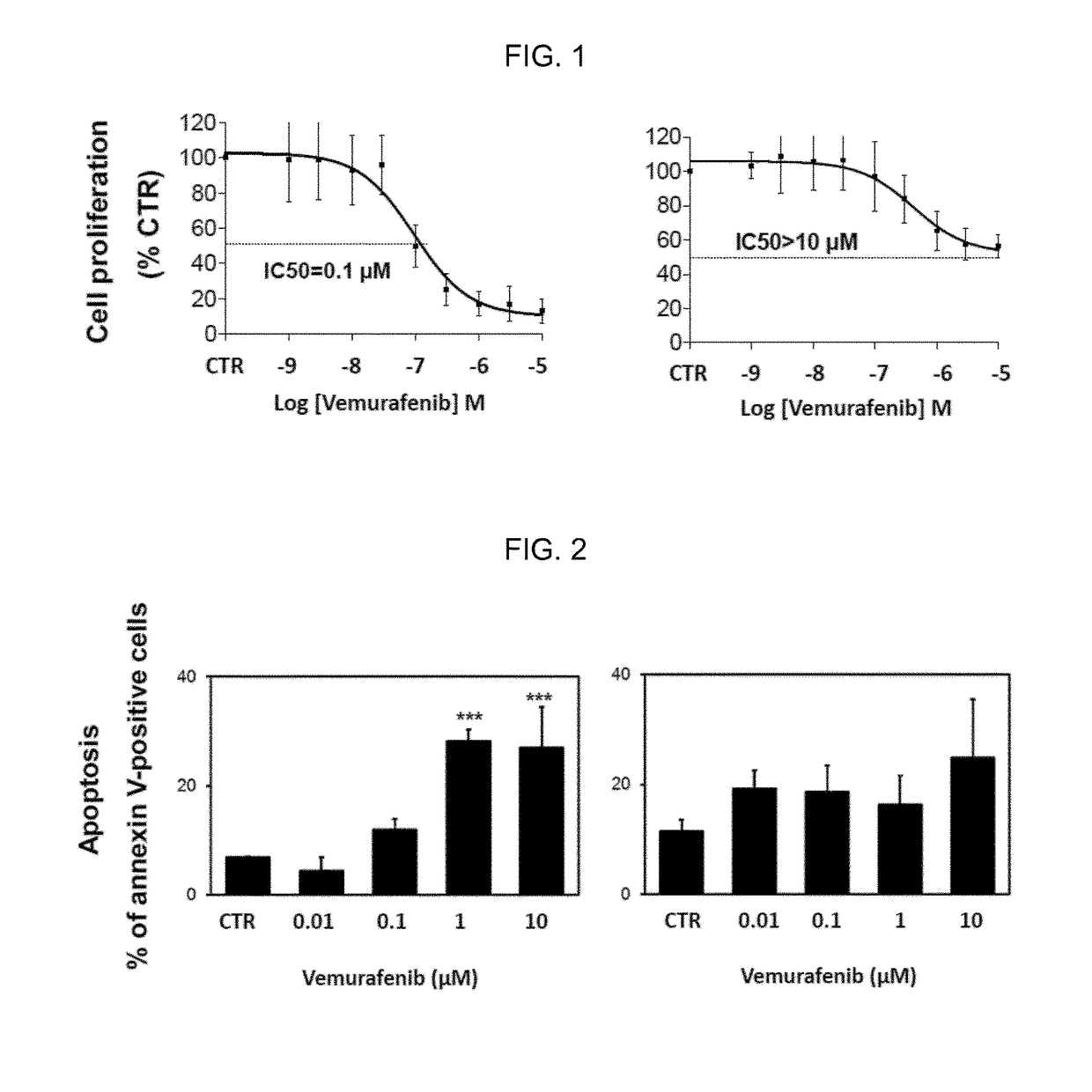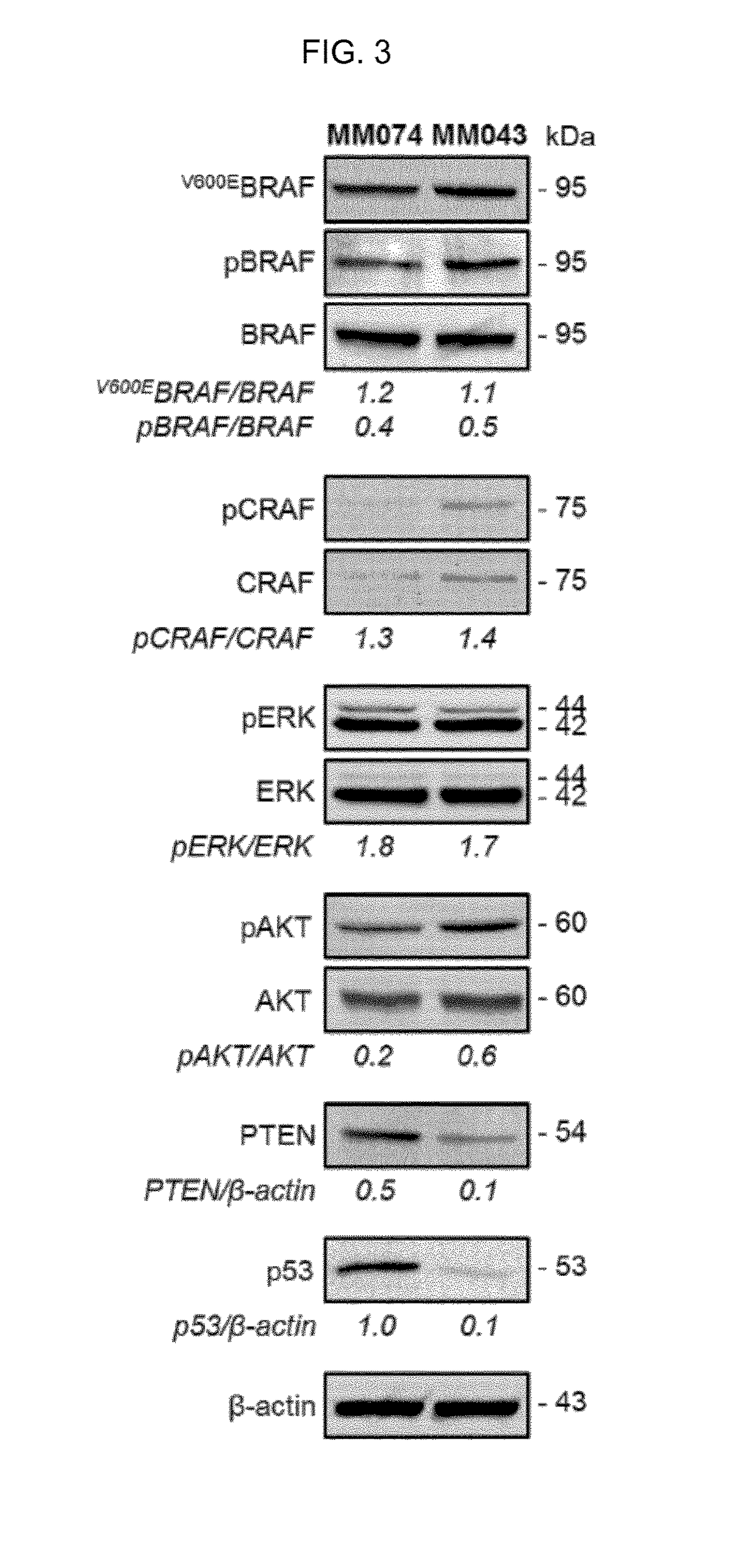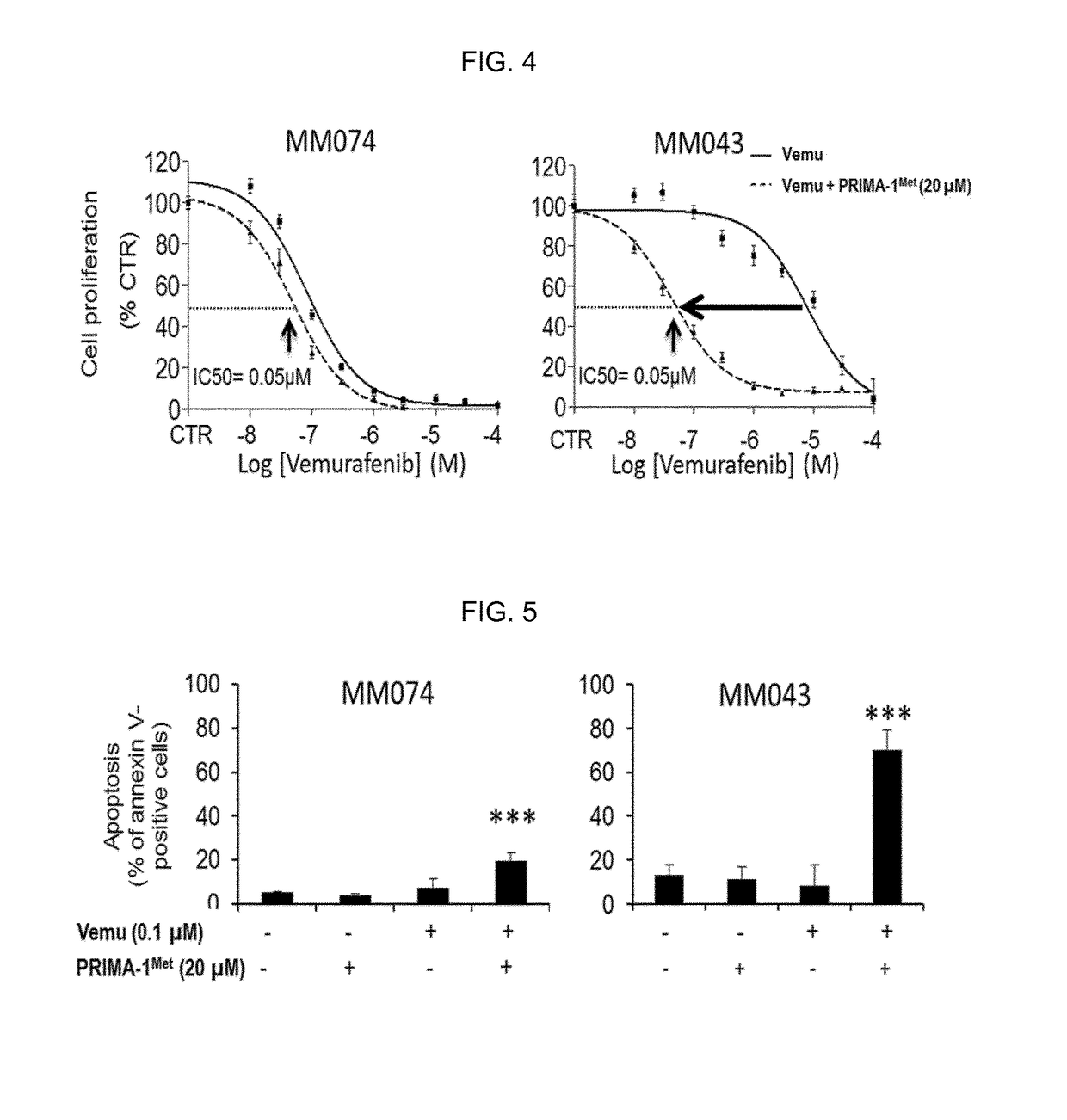New strategies for treating melanoma
a new strategy and melanoma technology, applied in the field of medicine, can solve the problems of ineffective systemic treatment of metastatic melanoma, no other monotherapy has yet been shown to be more effective, and the overall association of combined therapy with greater toxicity is not clear, so as to overcome both intrinsic and acquired resistance of melanoma
- Summary
- Abstract
- Description
- Claims
- Application Information
AI Technical Summary
Benefits of technology
Problems solved by technology
Method used
Image
Examples
example 1
Effect of Vemurafenib on V600EBRAF Melanoma Cells Lines Sensitive to Vemurafenib or V600EBRAF Melanoma Cells Lines with Intrinsic Resistance to Vemurafenib
[0362]The present inventors have established more than 100 melanoma cell lines from human melanoma metastases. More than 20 lines were characterized inter alia with regard to proliferation rate, key mRNA expression, key protein expression and / or activity, BRAF / NRAS / cKIT / MC1R / p53 mutations, and response to various inhibitors / effectors.
[0363]The effect of vemurafenib on a panel of nine V600E / KBRAF melanoma cell lines was evaluated. Six cell lines were found to be sensitive (1050≦2 μm) and five cell lines were found to be resistant (1050>10 μM) to vemurafenib (Sondergaard J N et al., 2010, J Transl Med. 8(1):39; Tap W D et al., 2010, Neoplasia N Y N. 12(8):637-649), as shown in Table 1.
TABLE 1Description of nine mutant BRAF melanoma cell lines by metastasis site of whichthey were derived, melanoma type, BRAF mutation, NRAS mutation, ...
example 2
Effect of Combination of Vemurafenib and the p53 Activator PRIMA-1Met on V600EBRAF Melanoma Cells Lines Sensitive to Vemurafenib or 6V00EBRAF Melanoma Cells Lines with Intrinsic Resistance to Vemurafenib
[0367]The present inventors realized that PI3K inhibition and / or PTEN upregulation can effectively decrease the phosphorylation of AKT and can potentiate the effect of vemurafenib in resistant cells. One possibility to stimulate PTEN and inhibit PI3K is to restore p53 expression and / or activity (Stambolic et al., 2001, Mol. Cell., 8, 317-325; Astanehe et al., 2008, J. Cell Sci., 121, 664-74). PRIMA-1Met is a drug which increases the transcriptional activity of both mutant and wild type p53 (Bao et al., 2011, Cell Cycle, 10, 301-307). The present inventors have studied the effect of the combination of vemurafenib (Vemu) and PRIMA-1Met on V600EBRAF melanoma cells lines sensitive to vemurafenib (MM074) or V600EBRAF melanoma cells lines with intrinsic resistance to vemurafenib (MM043).
[0...
example 3
Effect of Combination of Vemurafenib and the p53 Activator PRIMA-1Met on V600EBRAF Melanoma Cells Lines with Acquired Resistance to Vemurafenib
[0371]The MM074 cell line was made resistant (MM074-R) by a chronic exposure (12 weeks) to increasing concentrations (0.1 μM, 0.2 μM, 0.5 μM, 1 μM, and 2 μM) of vemurafenib (FIG. 7).
[0372]The results of cell proliferation of both parental and resistant cell lines are presented in FIG. 8. A 20-fold increase of IC50 occurs in cells with acquired resistance to vemurafenib compared to the sensitive / parental ones (FIG. 8, MM074: dashed line, MM074-R: full line).
[0373]By comparing pathway effectors between vemurafenib sensitive (MM074) and cells with acquired resistance (MM074-R), the latter was found associated with high AKT phosphorylation, low PTEN, and low p53 expression (FIG. 9, left panels: MM074; right panels: MM074-R). These important data indicate that the resistance could be acquired through the downregulation of p53.
[0374]In order to bre...
PUM
| Property | Measurement | Unit |
|---|---|---|
| thickness | aaaaa | aaaaa |
| thickness | aaaaa | aaaaa |
| time | aaaaa | aaaaa |
Abstract
Description
Claims
Application Information
 Login to View More
Login to View More - R&D
- Intellectual Property
- Life Sciences
- Materials
- Tech Scout
- Unparalleled Data Quality
- Higher Quality Content
- 60% Fewer Hallucinations
Browse by: Latest US Patents, China's latest patents, Technical Efficacy Thesaurus, Application Domain, Technology Topic, Popular Technical Reports.
© 2025 PatSnap. All rights reserved.Legal|Privacy policy|Modern Slavery Act Transparency Statement|Sitemap|About US| Contact US: help@patsnap.com



